#petrovichi
Text
The Lost Grand Duchesses: Part 1 - Anna Petrovna

Anna Petrovna was born in January 1708, officially out of wedlock. Her father, Peter ‘the Great’, had six daughters; Ekaterina, Anna, Elizaveta, Maria Natalia, Margarita, and Natalia. Peter planned to marry every daughter that survived infancy to a European house in order to consolidate alliances and friendships with Russia. Peter did not raise Anna, instead giving her to his younger sister Natalia Alexeievna and her husband Alexander Danilovich to raise. Peter’s plan to use the girls as alliance pawns influenced their childhood greatly; their education included embroidery, literature, dancing, and etiquette in order to be perceived as proper and lady-like. By her teenage years, Anna could speak five languages, no doubt to make her more attractive to European houses. Meanwhile, Peter’s sons were taught geography, history, and mathematics.

In 1721, serious marriage was on the table. Karl Friedrich of Schlewsig-Holstein-Gottorp was called to Russia, in order to meet Anna and her father. Karl had just entered his twenties, and his denouncers insisted that he was rude and arrogant. In comparison, Anna was barely thirteen years old, and incredibly shy.
This did not deter Peter, who was incredibly attracted by the idea of a Schleswig-Russian alliance. After a few years of shopping for other potential candidates, the marriage contract was signed. Ironically, the bride was not on the contract, and it was her father Peter and Karl Friedrich who signed. When the men signed the contract, Anna’s right to the Russian throne was instantly revoked.

In 1725, less than a year after the marriage between Anna and Karl Friedrich, Peter ‘the Great’ fell seriously ill. He called for Anna, whom he asked to write his will under his dictation. There has been great speculation over whether Peter planned to name Anna his heir; even though she had been forced to revoke her right to succession when her marriage was arranged, the Tsar of Russia still retained the power to elect his own heir regardless of the marriage contract terms. Peter was unable to speak, passing away shortly after, before declaring his heir. Whether or not Peter desired to make Anna heir remains one of history’s big ‘’what if’ questions.
In 1727, Anna and her husband Karl Freidrich moved to his native Kiel. Anna was deeply unhappy, missing her sister and nephew Peter Alexeievich; the Grand Duchess loved children. She wrote copious letters to her sister, Ekaterina, detailing her depression at being taken away from her home country. The rumours of Karl Freidrich’s arrogance appeared true; he preoccupied himself with affairs, leaving a pregnant Anna isolated.
In February, Anna gave birth to a baby boy, named Carl Peter Ulrich. Just days after, Anna contracted Puerperal fever, then known as ‘childbed fever’, a postpartum infection most likely caused by contaminated medical equipment and/or the medical staff not practicing proper hygiene. Anna became gravely ill, and requested to be buried back in her homeland, alongside her father in St. Petersburg. Her son Carl Peter survived the labour, and outlived his father, becoming the Duke of Holstein-Gottorp. When his aunt Elizaveta, Anna’s sister, died in 1762, Carl Peter became the Tsar of Russia, adopting the name Peter Feodorovich, Peter III.

Despite refusing to parent Anna himself, trying to marry her off when she was a child, and signing a marriage contract without Anna’s signature of consent, Peter claimed that Anna was his ‘favourite daughter.’ Only three of Peter’s fifteen legitimate children survived into adulthood. Anna died when she was only twenty years old. Her brother, Alexei Petrovich was imprisoned and tortured under the order of his father, dying from the torture. Only Anna’s beloved sister Elizaveta survived unscathed - the only out of fifteen siblings.

#the lost grand duchesses#anna petrovna#petrovichi#peter the great#he sounds like a tosser#alexei petrovich#old romanovs#russian history#romanov family#1700s#18th century#royal history#womens history#women in history#peter iii
27 notes
·
View notes
Text
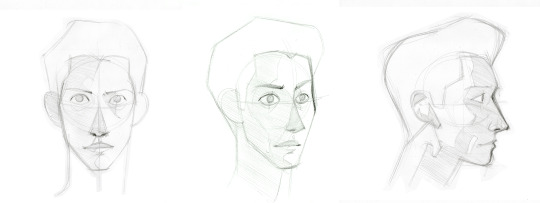



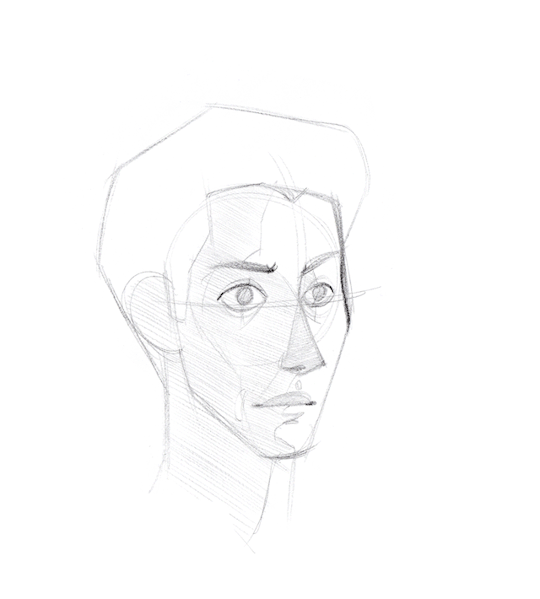


n° 79
Avril 2023
"Recherches des personnages de Nicolae Popov et Elsa Petrovichi, fait dans le cadre du projet "Un soir d'été", portant sur une enquête policière se déroulant pendant la période du régime communiste en Roumanie.
Support utilisé : Papier format A3
Outils utilisés : Crayons 2B
Logiciel utilisé : Photoshop
2 notes
·
View notes
Photo

Isaac Asimov (Petrovichi, Rússia Soviética, atual Rússia, 2 de janeiro de 1920 — Brooklyn, 6 de abril de 1992) foi um escritor e bioquímico norte-americano, nascido na Rússia, autor de obras de ficção científica e divulgação científica. Asimov é considerado um dos mestres da ficção científica e, junto com Robert A. Heinlein e Arthur C. Clarke, foi considerado um dos "três grandes" dessa área da literatura. A obra mais famosa de Asimov é a Série da Fundação, também conhecida como Trilogia da Fundação, que faz parte da série do Império Galáctico e que logo combinou com a Série Robôs. Também escreveu obras de mistério e fantasia, assim como uma grande quantidade de não-ficção. No total, escreveu ou editou mais de 500 volumes, aproximadamente 90 000 cartas ou postais, e tem obras em cada categoria importante do sistema de classificação bibliográfica de Dewey, exceto em filosofia. Asimov criou as Três Leis da Robótica que são, na verdade, três regras e/ou princípios idealizados pelo escritor a fim de permitir o controle e limitar os comportamentos dos robôs que este trazia à existência em seus livros de ficção científica. Em 1981, um asteroide recebeu seu nome em sua homenagem, o 5020 Asimov. #isaacasimov #ficcaocientifica #leisdarobotica #escritor #fundacao #eurobo (em Santana, São Paulo, Brazil) https://www.instagram.com/p/Cm7uh-yMbft/?igshid=NGJjMDIxMWI=
2 notes
·
View notes
Text
"Education isn't something you can finish."
Isaac Asimov was an American writer and professor of biochemistry at Boston University.
Born, January 2, 1920
Petrovichi, Russian SFSR
Died April 6, 1992 (aged 72)
New York City, U.S.

ChatGPT
Isaac Asimov was a prolific author and biochemist known for his contributions to science fiction and popular science writing. Here are five lesser-known facts about him:
Prolific Writer: Isaac Asimov was incredibly prolific, having written or edited over 500 books and an estimated 90,000 letters and postcards. His works covered a wide range of subjects, including science fiction, popular science, history, religion, and literature.
Multilingual Scholar: Asimov was proficient in multiple languages. He could read and write in English, Russian, Yiddish, and even had a good understanding of several classical languages, including Latin and ancient Greek. His linguistic skills allowed him to delve into a wide range of literary and scientific works.
Three Laws of Robotics: Asimov formulated the famous "Three Laws of Robotics" which he introduced in his short story "Runaround" in 1942. These laws became a fundamental framework in the field of robotics and artificial intelligence. The three laws are designed to govern the behavior of robots and ensure their ethical use.
A robot may not injure a human being or, through inaction, allow a human being to come to harm.
A robot must obey the orders given to it by human beings, except where such orders would conflict with the First Law.
A robot must protect its own existence as long as such protection does not conflict with the First or Second Law.
Educational Background: Asimov earned his Ph.D. in biochemistry from Columbia University College of Physicians and Surgeons. Although he is best known for his contributions to science fiction, his scientific background and expertise were significant influences in his science fiction writing, especially in his Foundation series.
Humanism and Rationalism: Asimov was a self-proclaimed humanist and rationalist. He was a strong advocate for scientific thinking, secularism, and the pursuit of knowledge. His non-fiction works often reflected his humanist philosophy, and he was an outspoken supporter of reason, education, and the scientific method.
#IsaacAsimov#ScienceFiction#Author#Biochemist#ThreeLawsOfRobotics#ProlificWriter#MultilingualScholar#Robotics#FoundationSeries#Humanism#Rationalism#PopularScience#Literature#ColumbiaUniversity#Science#Educator#Futurist#Secularism#ArtificialIntelligence#Legacy#today on tumblr#quoteoftheday
1 note
·
View note
Text
January 02

[1784] Ernest I, Duke of Saxe-Coburg-Saalfeld (as Ernest III) from 1806 and then, from 1826 Duke of Saxe-Coburg-Gotha. He was the uncle of Queen Victoria and the father of her husband, Prince Albert.
[1836] Queen Emma of Hawaii, Consort of King Kamehameha IV was born.
[1857] Frederick Burr Opper, American pioneering cartoonist was born in Madison, Ohio.
[1860] William Corless Mills, American museum curator was born in Pyrmont, Ohio.
[1861] Helen Herron Taft, American First Lady (1909-13) was born in Cincinnati, Ohio.
[1920] Isaac Asimov, Russian scientist and sci-fi writer (I Robot, Foundation Trilogy) was born in Petrovichi, Russia.
[1928] Vaughn Beals, CEO (Harley Davidson motorcycle) was born in Cambridge, Massachusetts.
[1947] Jack Hanna, American zookeeper and TV personality was born in Knoxville, Tennessee.
[1968] Cuba Gooding Jr., American actor was born in The Bronx, New York.
[1974] Tomáš Řepka, Czech football defender was born in Slavičin, Czech Republic.
[1981] Maxi Rodríguez, football midfielder was born in Rosario, Argentina.
[1983] Kate Bosworth, American actress was born in Los Angeles, California.
[1985] Heather O'Reilly, American soccer midfielder was born in East Brunswick, New Jersey.
[1987] Shelley Hennig, American actress and model was born in Metairie, Louisiana.

[1694] Henry Booth, 1st Earl of Warrington, English politician, die at 42.
[1819] Maria Luisa of Parma, Queen of Charles IV of Spain, dies at 67.
[1861] Frederick William IV, King of Prussia from 1840 and Germany from 1849, dies at 67 at the Sanssouci Palace.
[1911] Kanno Sugako, Japanese anarcho-feminist, hanged for her role in the plot to assassinate Emperor Meiji at 29.
[1953] Guccio Gucci, Italian founder of Gucci fashion house, dies at 71.
[2009] Jett Travolta, son of actors John Travolta and Kelly Preston, dies of a seizure at 16.
[2013] Ladislao Mazurkiewicz, Uruguayan football goalkeeper dies from respiratory illness at 67.
[2022] Jens Jørgen Hansen, Danish football right back, dies at 82.
#on this day#otd#otdih#on this day in history#birthdays#rest in peace#maxi rodríguez#heather o'reilly#isaac asimov#vaughn beals#harley davidson motorcycles#jack hanna#shelley hennig#gucci#kate bosworth#football#football history#soccer#january#january 03
1 note
·
View note
Text

It's January 2nd, 🤖 Science Fiction Day. On or about this day in 1920, prolific science-fiction writer Isaac Asimov was born in Petrovichi, Russia. He emigrated with his family to America when he was three years old, and grew up in Brooklyn, New York. As an adult, Asimov became a biochemist, but he gradually abandoned that career in favor of his passion – science-fiction writing. He wrote or edited about 500 volumes before he passed away in 1992, the most famous being his "Foundation," "Galactic Empire," and "Robot" series. He also coined the word "robotics" and introduced the world to the "Three Laws of Robotics."
First Law: A robot may not injure a human being or, through inaction, allow a human being to come to harm.
Second Law: A robot must obey orders given to it by human beings, except where such orders would conflict with the First Law.
Third Law: A robot must protect its own existence as long as such protection does not conflict with the First or Second Laws.
In honor of Asimov's substantial contributions to the science-fiction genre, the Hallmark Channel and Scholastic Corporation organized the first annual US National Science Fiction Day on this day in 2012. The event has grown in popularity throughout the US over the years and has now begun to take hold throughout the world.
So, kick back today and let your imagination run wild with a good sci-fi novel, short story, comic book, TV show, or movie. You won't be disappointed if you choose from a master like Jules Verne, H.G. Wells, Edgar Rice Burroughs, Sir Arthur Conan Doyle, Robert A. Heinlein, Ray Bradbury, Arthur C. Clarke, Frank Herbert, Mary Shelley, George Orwell, Michael Crichton, Frederik Pohl, Gene Roddenberry, George Lucas, Steven Spielberg, or of course Isaac Asimov. ☮️ Peace… Jamiese of Pixoplanet
#Jamiese#Pixoplanet#science fiction day#science fiction films#science fiction art#science fiction novel#science fiction movie#science fiction#science fiction movies#science fiction artwork#science fiction book#science fiction film#science fiction books#science fiction author#science fiction writer#science fiction magazine#science fiction fantasy#scifi movies#science fiction music#scifi#science fiction and fantasy#scifi movie#scifi world#instagram#facebook#twitter#pinterest#tumblr#tiktok#youtube
0 notes
Photo

Post n°100
Mars 2022
Dessins d’imagination
Voici les personnages d’un court-métrage sur lequel je travaille.
Synopsis :
Nicolae Popov est un jeune détective provenant d’un pays pauvre, de l’est. Lorsqu’il sera engagé afin d’enquêter sur la disparition d’un sénateur à la suite d’une attaque au Sénat, il se confrontera aux dessous d’un régime politique corrompu.
Personnages :
Nicolae Popov : Le jeune détective qui est chargé de l’enquête de la disparition du sénateur Andrei Effimov. C’est un personnage très enthousiaste, qui n’a pas encore connu les dessous du monde qui l’entoure. Ainsi l’enjeu de ce personnage est de voir de quelle manière Nicolas va évoluer dans cette société corrompue, mais aussi comment il va surmonter les obstacles qui surviennent au cours de son enquête.

Andrei Effimov : Le sénateur porté disparu. Il représente le principal opposant politique de l’actuel maire de la ville dans laquelle se déroule l’histoire.
(ici dessous il y a le sénateur après avoir été retrouvé)

Sofia Effimov : La fille du sénateur disparu. Elle sera le personnage qui aidera le détective Nicolae Popov à retrouver son père.
M. Petrovichi : La maire de la ville depuis 20 ans. Il est l’antagoniste de l’histoire. Il représente un personnage politique important dans un pays qui s’oriente de plus en plus vers un régime totalitaire.

Elsa Petrovichi : La fille du maire mais aussi un membre de la police. Durant la première moitié de l’histoire elle est du coté de Nicolae Popov, mais l’influence de son père ne passe pas inaperçue, en la poussant à trahir son collègue.

Bonus :
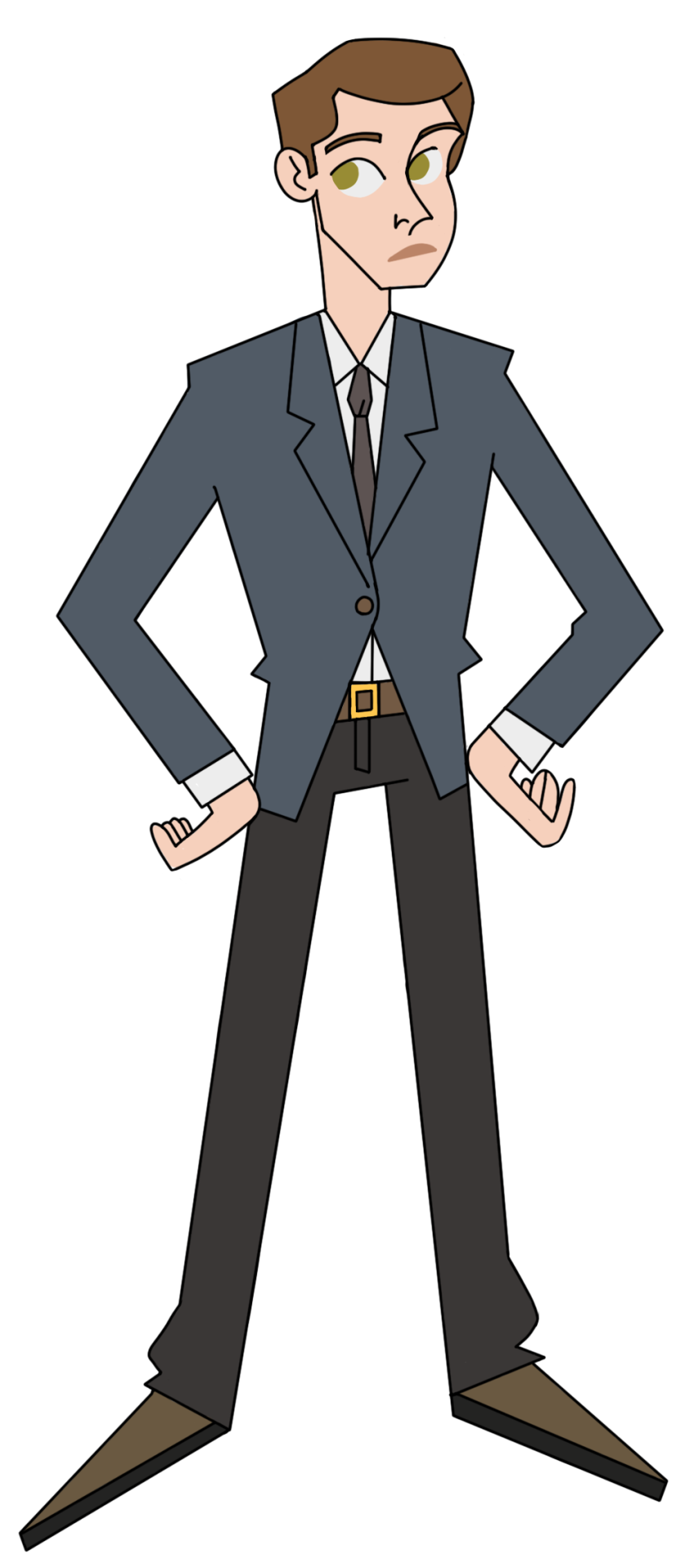
Nicolae Popov en style cartoon.
1 note
·
View note
Text
ISAAC ASIMOV (January 2, 1920 – April 6, 1992)

January 2nd marked the centenary of Isaac Asimov’s birth in Petrovichi, in the former USSR.
If you are reading this blog, which is a blog about fantasy and science fiction, then you are probably already a fan of Asimov, or at the very least you are aware of his writing. You’ve probably seen the films “Bicentennial Man” with the late Robin Williams and “I, Robot” starring Will Smith, but did you know that Isaac was such a prolific writer of both fiction and non-fiction and wrote on such a variety of subjects, including poetry, letters and post-cards as well as novels and short stories that he is the only author whose works are included in 9 of the 10 categories of writing of the Dewey Decimal System, the system by which libraries categorise the written word. This is the system that allows you to find the book you’re looking for when you head to your local library. (If anyone actually does that any longer?) This, in itself, is a rather amazing fact for any writer.
If you are into science fiction, then you also probably know that Asimov also came up with the three laws of robotics in his works, which state:
1. A robot may not injure a human being or, through inaction, allow a human being to come to harm.
2. A robot must obey the orders given it by human beings except where such orders would conflict with the First Law.
3. A robot must protect its own existence as long as such protection does not conflict with the First or Second Laws
Although we are given a foreshadowing of these laws in previous works, it was in the short story “Runaround” (1942) that they were first introduced.
The idea of a robot or mechanical humanoid form was not Asimov’s, of course. The word “robot” comes from the Czech language and was introduced to us by Josef Capek in his play “R.U.R. (Rossum's Universal Robots)”, (1920) but Asimov took Capek’s idea and ran with it. It was Asimov who invented the word “robotics”, defined in the OED as “The technology or science of the design, construction, operation, and use of robots and similar automatic devices.”

That wasn’t the only word Asimov introduced into the English language, however. He also gave us two more important scientific words – “psychohistory” (the theory that the history of large populations is statistically predictable, based on psychological theories of human and social behavior) and “positronic” (originally a technological device that provides a robot with a consciousness recognizable to humans.) This word became important in science because a sub-atomic particle was later named a “positron” and the word “positronic” then took the meaning of an adjective to describe anything related to positrons.

Another fact that many Asimov fans might not know (I certainly didn’t until I was researching for this blog) was that he also wrote smutty limericks. He wrote lewd lines by the dozens and ended up publishing 5 volumes. Here’s an example of one of these dirty limericks.
There was a sweet girl of Decatur
Who went to sea on a freighter.
She was screwed by the master
-An utter disaster-
But the crew all made up for it later.
With regard to his personal life, Asimov was an atheist and became president of the American Humanist Association, an organization which promotes (among other things and very simplistically) the idea that people don’t need a god to be good. Although he was tolerant of other people’s religious beliefs, he hated anything superstitious or pseudoscientific being passed off as “real science”. He also once wrote this quotation,
“If I were not an atheist, I would believe in a God who would choose to save people on the basis of the totality of their lives and not the pattern of their words. I think he would prefer an honest and righteous atheist to a TV preacher whose every word is God, God, God, and whose every deed is foul, foul, foul”.
In this matter, I could not agree with him more!
I also discovered a number of audio versions of Asimov’s works on Youtube which I definitely intend to check out. I suggest you do too, my readers.
Thank you for reading.
(I do not own the right to any pictures in this blog)
13 notes
·
View notes
Photo

Игровые новости от AddonGame https://addongame.com/video/new-thunder-show-tankovye-petrovichi/
New Thunder Show: Танковые Петровичи
Появилось новое видео на канале War Thunder. Официальный канал
youtube
По материалам: news-game.ru
0 notes
Text
The Fun They Had Summary in English by Isaac Asimov
The Fun They Had Summary in English by Isaac Asimov
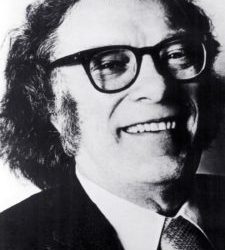
We have decided to create the most comprehensive English Summary that will help students with learning and understanding.
The Fun They Had Summary in English by Isaac Asimov The Fun They Had by Isaac Asimov About the Author
Isaac Asimov (1920-1992) was bom in Petrovichi, Russia. His family immigrated to the United States in 1923. He was a Professor of Biochemistry at Boston University and a…
View On WordPress
0 notes
Link

Isaac Asimov was born in the village of Petrovichi, near Smolensk, Russia. His birth date is unknown: the reconstructions indicate that he was born between October 4, 1919 and January 2, 1920 and the latter date was adopted as his birthday.
Isaac Asimov’s writing career began in 1939, with the publication of the short story “Marooned off Vesta” in the magazine “Amazing Stories”. He soon became famous thanks to the first stories about positronic robots, which were followed in subsequent years by the ones that formed the then Foundation Trilogy.
Isaac Asimov was one of the writers who brought science fiction out of the world of magazines and a great scientific popularizer with his many articles and essays. A humanist and rationalist atheist, he brought many of his ideas into his literary works too, becoming one of the first great authors of hard science fiction, gaining a fame that spread worldwide. He left an legacy estimated in about 500 books of various genres.
0 notes
Text
Fathers of Robotics: Isaac Asimov
This is the first part of three in our series “Fathers of Robotics”. With robots getting more and more present in our daily lives, it’s interesting to look back and get to know the great minds who first conceived a future where machines would help humans.
Isaac Asimov
Born Isaak Ozimov in Petrovichi (Now Smolensk, Russia) between October 4, 1919 and January 2, 1920. He was a prolific American writer whose bibliography counts more than 500 books. He was among the “Big Three” science fiction writers during his lifetime with Robert A. Heinlein and Arthur C. Clarke. He is considered one of the fathers of robotics with his Robot series.
Growing up in Brooklyn, NY he demonstrated early the signs of a bright mind and an appetite for reading. Thanks to his parents store which also sold newspapers and magazines, he was supplied with an unending source of reading material.
At the age of 11, he started writing his own stories and was selling them before being 19 years old. Pursuing a degree in chemistry,he earned his Ph.D. in 1948. He eventually became a professor before switching to full-time writing in 1958. His most famous pieces of work are the Foundation and Robot series.
The Robot Series
In one of his most famous series, made of 38 short stories and 5 novels, Asimov built an universe and unified history promoting the themes of the interaction of humans, robots, and morality. Starting with “I, Robot” in 1950, the series would see the birth of two important concept : positronic robots and robotics. Indeed, the Oxford English Dictionary credits Asimov for inventing both these words.
While the Robot word originated from the Karel Čapek’s play “R.U.R” in 1920, the term Robotics only appeared in 1941 in “Liar!” (published in “Astounding Science Fiction”). But not only Asimov coined the term, he also wrote the essential rules of this field of science.
The Three Laws of Robotics
They are also known as the Thee Laws or Asimov’s Laws. They define the ground principles for modern robotics.
While being introduced in his 1942 short story “Runaround”, they have been hinted at during various
A robot may not injure a human being or, through inaction, allow a human being to come to harm.
A robot must obey the orders given it by human beings except where such orders would conflict with the First Law.
A robot must protect its own existence as long as such protection does not conflict with the First or Second Laws
A fourth (or more precisely a Zeroth law) was added by Asimov himself later :
A robot may not harm humanity, or, by inaction, allow humanity to come to harm.
These laws would move beyond the realm of Asimov’s work. Becoming a science-fiction postulate, and even the basics for robotics design.
But as Asimov said, these rules “are obvious from the start, and everyone is aware of them subliminally. The Laws just never happened to be put into brief sentences until I managed to do the job. The Laws apply, as a matter of course, to every tool that human beings use”.
Defining robotics and opening our eyes
Indeed, Asimov has done more than just creating robotics and defining its rules. He also opened our eyes on what could be the future of technology, but also of humanity. His care for details and for plausible science-fiction, as well as the choice to offer a unified universe in his series, turned his work into pillars of modern science-fiction. Not mentioning the simple volume of stories written during his lifetime, making him one of the most prolific author ever.
His books influenced a whole span of technology, people (Paul Krugman, holder of a Nobel Prize, stated Asimov’s work inspired him to become an economist), and so much more. Without Asimov, our world would be very different, and robotics would surely not be where it is today. He fully deserves his place among the fathers of robotics.
Related Stories
Should Robots Pay Taxes?
Why Do We Need Robots : Survival
Why Do We Need Robots : Artificial Intelligence
from RobotShop Blog Feed http://ift.tt/2sq4n9P
via IFTTT
2 notes
·
View notes
Photo
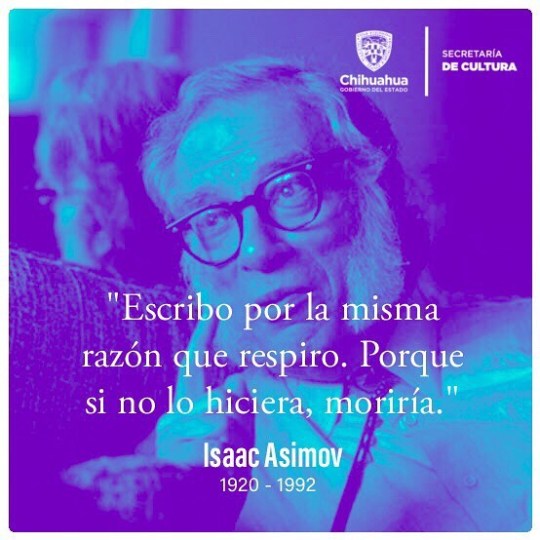
¡Buenos días! Tal día como hoy, en 1920, nace en la ciudad de Petrovichi (Rusia), Isaac Asimov, bioquímico nacionalizado estadounidense. Se convertiría en un exitoso escritor de ciencia ficción, en las que destacaron sus libros sobre robots. #FelizMiércoles #SomosCultura (en Chihuahua, Chihuahua) https://www.instagram.com/p/BsIvgghhMlK/?utm_source=ig_tumblr_share&igshid=14gpctnlojm8p
0 notes
Photo
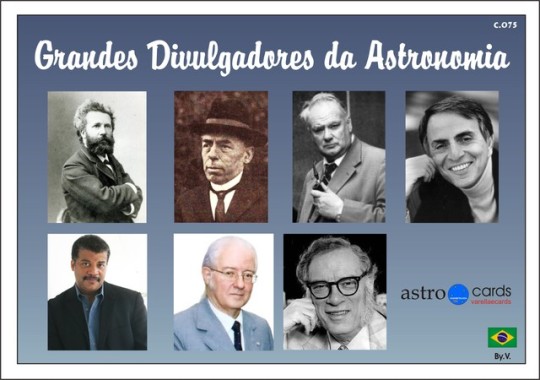
Da esquerda para a direita, linha superior:
1. Nicolas Camille Flammarion - Francês
Montigny-le-Roi, 26 de fevereiro de 1842 — Juvisy-sur-Orge, 03 de junho de 1925, aos 83 anos;
2. José Comas-Solá - Espanhol
Barcelona, 19 de dezembro de 1868 - Barcelona, 02 de dezembro de 1937, aos 69 anos (quase completos);
3. Sir Patrick Alfred Caldwell-Moore - Inglês
Pinner, Middlesex, 04 March 1923 – Selsey, West Sussex, 09 December 2012, aos 89 anos;
4. Carl Edward Sagan - Americano
Nova Iorque, 09 de novembro de 1934 — Seattle, 20 de dezembro de 1996, aos 62 anos;
Linha inferior, da esquerda para a direita:
5. Neil deGrasse Tyson - Americano
Manhattan, Nova York, 05 de outubro de 1958 (58 anos);
6. Ronaldo Rogério de Freitas Mourão - Brasileiro
Rio de Janeiro, 25 de maio de 1935 — Rio de Janeiro, 25 de julho de 2014, aos 79 anos;
7. Isaac Asimov (Isaak Yudavich Azimov) - Russo, naturalizado americano
Nasceu em Petrovichi, Rússia Soviética, entre 04 de outubro de 1919 e 02 de janeiro de 1920 – Brooklyn,Nova York, 06 de abril de 1992, aos 72 anos.
1 note
·
View note
Text


It's January 2nd, Science Fiction Day. On or about this day in 1920, prolific science-fiction writer Isaac Asimov was born in 🇷🇺 Petrovichi, Russia. He emigrated with his family to 🇺🇸 America when he was three years old, and grew up in Brooklyn, New York. As an adult, Asimov became a biochemist, but he gradually abandoned that career in favor of his passion – science-fiction writing. He wrote or edited about 500 volumes before he passed away in 1992, the most famous being his 🧮 "Foundation," 👑 "Galactic Empire," and 🤖 "Robot" series. He also coined the word "robotics" and introduced the world to the "Three Laws of Robotics."
In honor of Asimov's substantial contributions to the science-fiction genre, the Hallmark Channel and Scholastic Corporation organized the first annual US National Science Fiction Day on this day in 2012. The event has grown in popularity throughout the US over the years and has now begun to take hold throughout the 🌌 universe.
So, kick back today and let your imagination run wild with a good 📚 sci-fi novel, 📰 short story, 💥 comic book, 📺 TV show, or 🎥 movie. You won't be disappointed if you choose from a master like Jules Verne, H.G. Wells, Edgar Rice Burroughs, Sir Arthur Conan Doyle, Robert A. Heinlein, Ray Bradbury, Arthur C. Clarke, Frank Herbert, Mary Shelley, George Orwell, Michael Crichton, Frederik Pohl, Gene Roddenberry, George Lucas, Steven Spielberg, or of course Isaac Asimov. ☮️ Peace… Jamiese of Pixoplanet
#sciencefictionbook#sciencefictionwriter#sciencefictionauthor#sciencefictionmagazine#sciencefictionfantasy#scifimovies#scifi#sciencefictionmusic#scifiworld#scifimovie#scifidaily#scifigeek#sciencefictionandfantasy#scifinerd#scifiart#sciencefictionbookseries#sciencefictiontreffenspeyer#sciencefictionromance#Jamiese#Pixoplanet
2 notes
·
View notes
Quote
Isaac Asimov
Born 2 Jan 1920; died 6 Apr 1992 at age 72.
American author and biochemist, who was a prolific writer of science fiction and of science books for the layperson. Born in Petrovichi, Russia, he emigrated with his family to New York City at age three. He entered Columbia University at the age of 15 and at 18 sold his first story to Amazing Stories. After earning a Ph.D., he taught biochemistry at Boston University School of Medicine after 1949. By 18 Mar 1941, Asimov had already written 31 stories, sold 17, and 14 had been published. As an author, lecturer, and broadcaster of astonishing range, he is most admired as a popularizer of science (The Collapsing Universe; 1977) and a science fiction writer (I, Robot; 1950). He coined the term “robotics.” He published about 500 volumes.
https://todayinsci.com/1/1_02.htm
4 notes
·
View notes